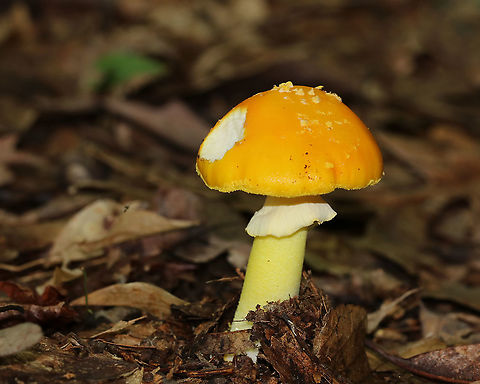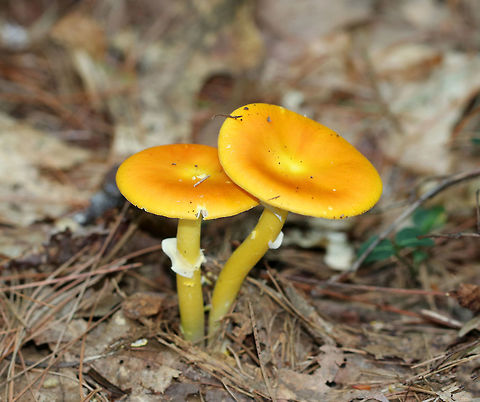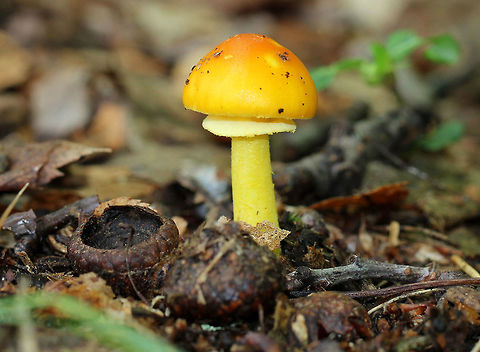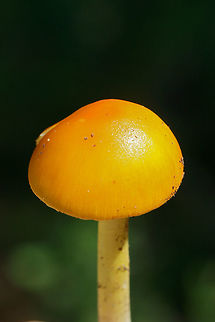
Appearance
The cap is initially ovoid in shape, but in maturity becomes convex and eventually flattened. Orange to bright yellow-orange in color, it reaches diameters of 3 to 9 cm. Young specimens are covered with chrome yellow warts that may be easily rubbed off or washed away with rain.The cap surface is smooth and sticky beneath the warts; the edge of the cap is striate, reflecting the arrangement of the gills underneath. The flesh is white. The gills are barely free from the stem, and packed close together. They are white or tinged yellow on the edges, and initially covered with a yellowish partial veil.
The stem is typically 5.5 to 11.5 cm long by 0.7 to 1.4 cm thick, equal or slightly tapered upward from a small rounded bulb at the base. Its color may range from white to yellowish orange, and the surface may be smooth, or covered with small flakes. The base of the stem usually has chrome yellow flakes of universal veil material adhering loosely to the bulb, or in the soil around the base. The partial veil leaves a skirt-like ring, on the upper stem. The spore print of "A. flavoconia" is white.

Naming
This species has often been confused with "A. muscaria", some subspecies of which are also orange-colored. It also bears some resemblance to "A. frostiana" and "A. flavorubescens".
Distribution
In North America, "Amanita flavoconia" has a wide distribution and has been collected from several locations, including Ontario, Canada; the United States and Mexico. It has been described as "of the most common and widespread species of "Amanita" in eastern North America."
Habitat
A common mycorrhizal mushroom, "Amanita flavoconia" grows solitary or in groups on the ground in the summer to the fall, in broad-leaved and mixed woods. Noted for preferring hemlock, it is also associated with high elevation red spruce forests.References:
Some text fragments are auto parsed from Wikipedia.